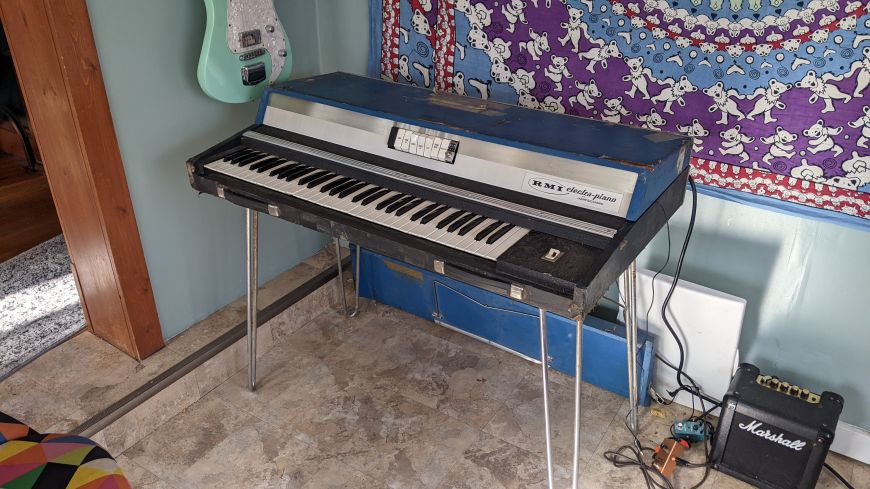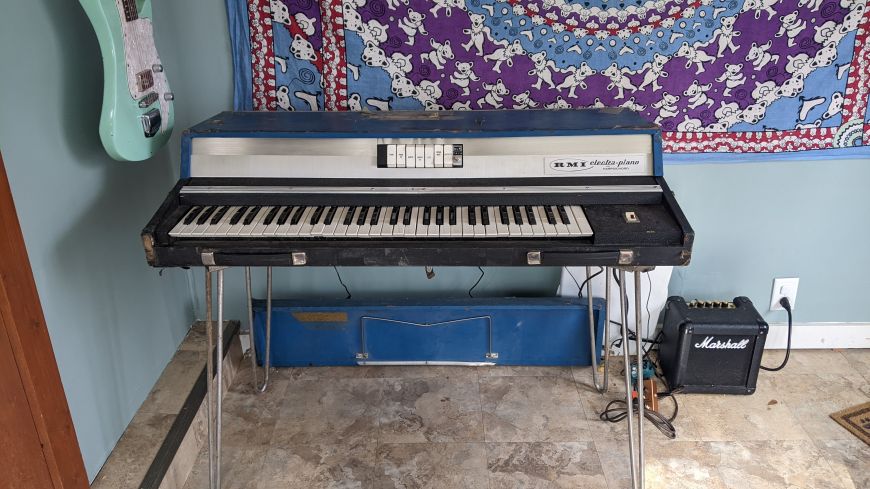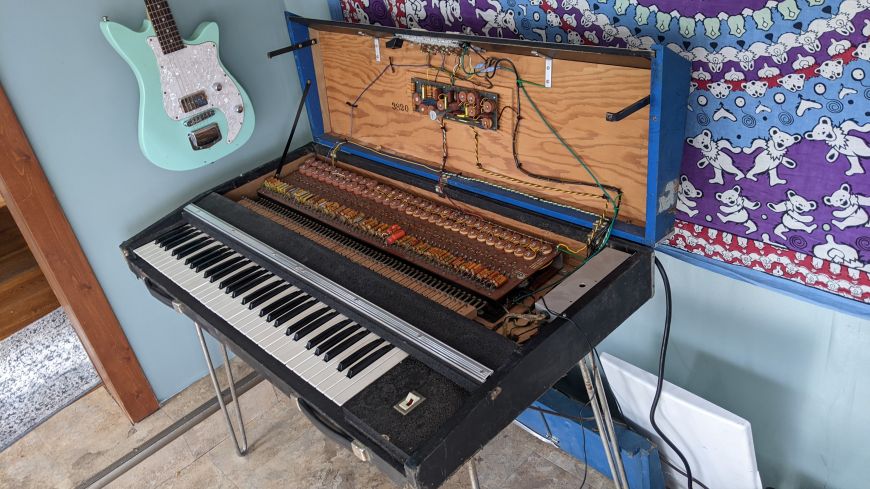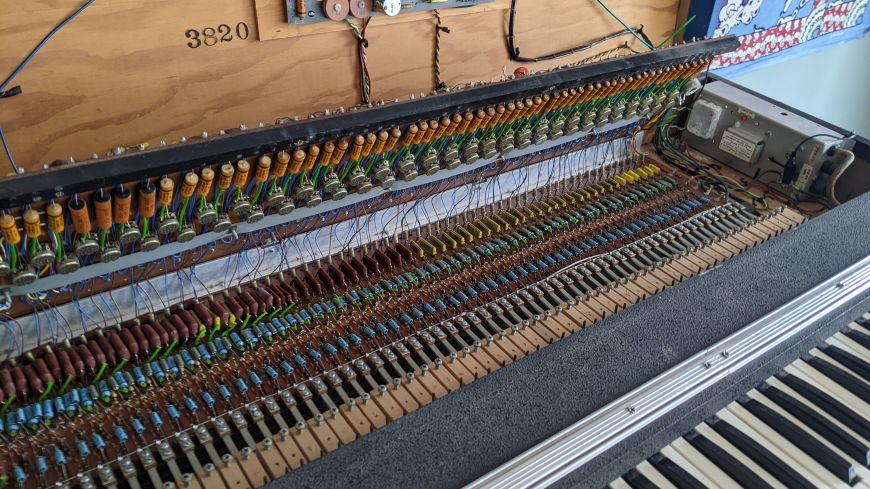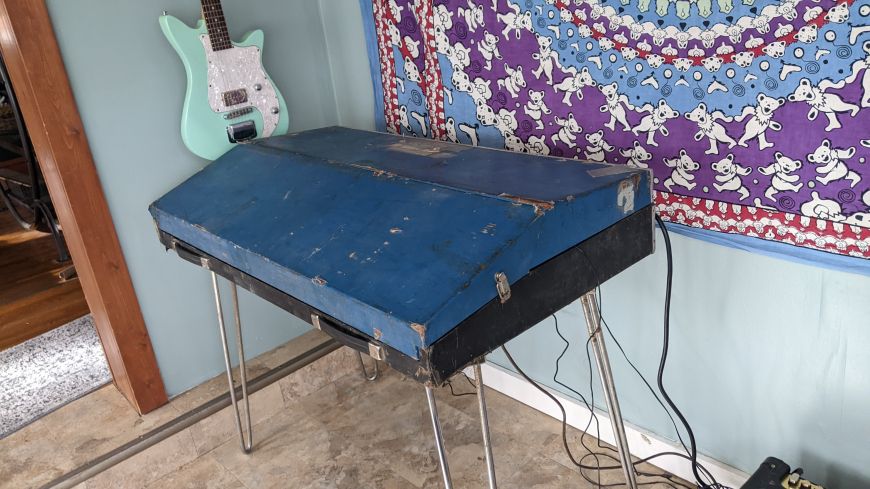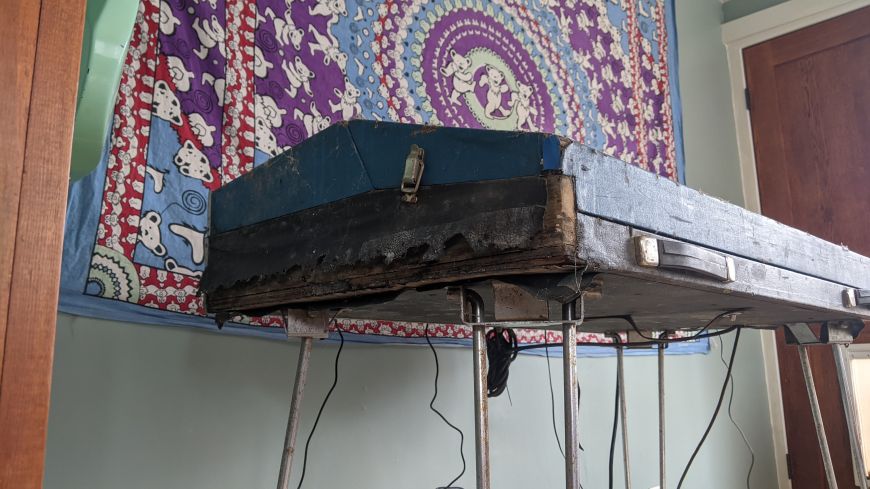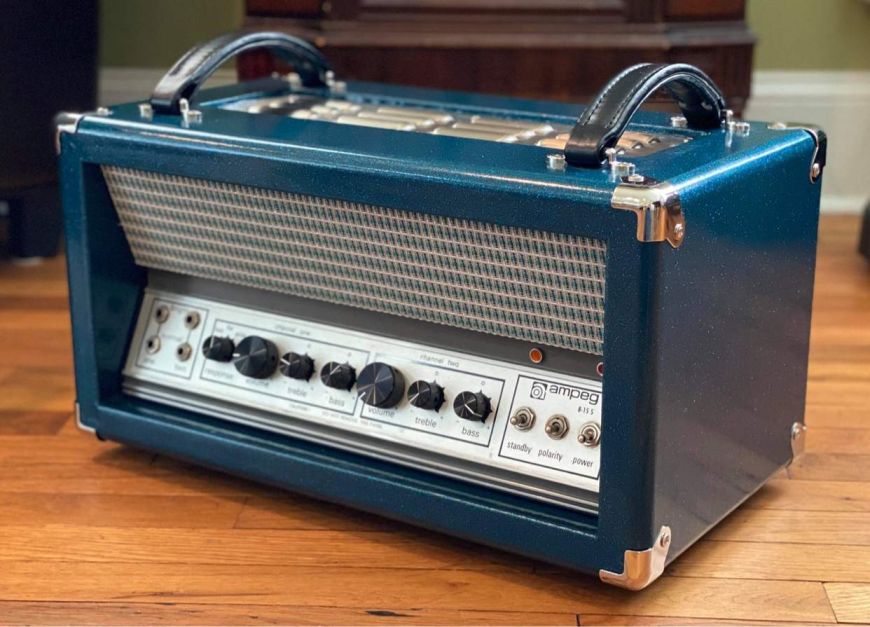I was given this RMI Electra 300a electronic piano. It is not just electric, like an electric guitar or like a wurlitzer electric piano, it is full-on electronic. There are no mechanical parts creating the sounds, instead there is an oscillating circuit for each individual note.
They're not very well known and you don't see them very often, but they had a unique "buzzy" sound that sounds really nice. It's the instrument used in the song "Sweet Dreams" by Aerosmith, as well as "Hello I Love You" by The Doors and "Right Place, Wrong Time" by Dr. John. But their main duty was on the stage and not in the recording studio, so there are not many bands that recorded using an Electra instead of an acoustic piano. One big exception is the band Genesis, with pianist Tony Banks using an RMI on many records.
They were very expensive and were sold for $1,195 in 1977, which is $5,700 after adjusting for inflation. Wow! At that price, plus the fact that they didn't sound at all like a piano, the must not have sold a lot. And by the late '70s, they just couldn't compete against Moog, Yamaha CP, Korg, and others.
This one here is an Electra 300a. More commonly found is the Electra 368x. This piano used to belong to the late radio tower engineer for Kansas Public Radio, Bruce Muncie. I helped move it out of his attic after he passed away, and we stored it at the radio tower for several years. I brought it home a few months ago after getting interested in playing music and learning piano again. And, honestly, I get just as much enjoyment from fixing and tinkering as I do from playing instruments, so this is the perfect project for me.
The above photo shows the circuits, one for each note. There are two fiber boards that hold all the circuits, and they are attached to each other on hinges so that the one on top can be lifted up to access the components. I only recently discovered this after working on the piano for several weeks!
Here is is with the lid on:
There some real bad damage to the exterior, but everything inside the case is in great condition.
The first thing to do was to get it into tune. Most of the keys could be tuned using the potentiometers but a few of them needed some capacitors removed. That's because those notes where so flat they were out of the range of the tuning pot, and the service manual says to remove capacitance to fix a flat note. If it was too sharp, I would have needed to add capacitance.
Here is my video showing how I got those extra flat notes into tune:
A few weeks after recording that video and finishing up all the tuning, a new problem emerged. The high C note suddenly went dead. Thankfully the service manual has two pages devoted to fixing a dead note. Talk about "right to repair"!
So I need to fix that next, but I also want to fully restore the exterior and get it looking good again. I think I want to use this tolex from mojotone.com called "Ocean Sparkle":
That's it for now, stay tuned for more!

